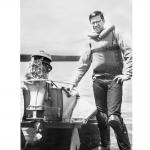John,
At that time I was only 21 and trust me dad did not like any "helpful" information from someone who he felt was wet behind the ears.I don't know if Tenny had told my dad what percentage of nitro to use but I suspect not. Prior to the porting change dad's Anzani had been a very strong runner winning most of it's races. I ran it a couple of times on my boat and liked it but dad wouldn't let me borrow his motor after that. Dad prefered smaller hulls than I did, he liked the 9' 9" size and I prefered the 11' 6" size.
Until I got my Koenig and big Bellcraft I was probably not really a very good driver and dad could usually beat me. Once I got a rig that I was comfortable with things fell into place for me and I started winning a few races.
Jerry


 Thanks:
Thanks:  Likes:
Likes: 





Bookmarks